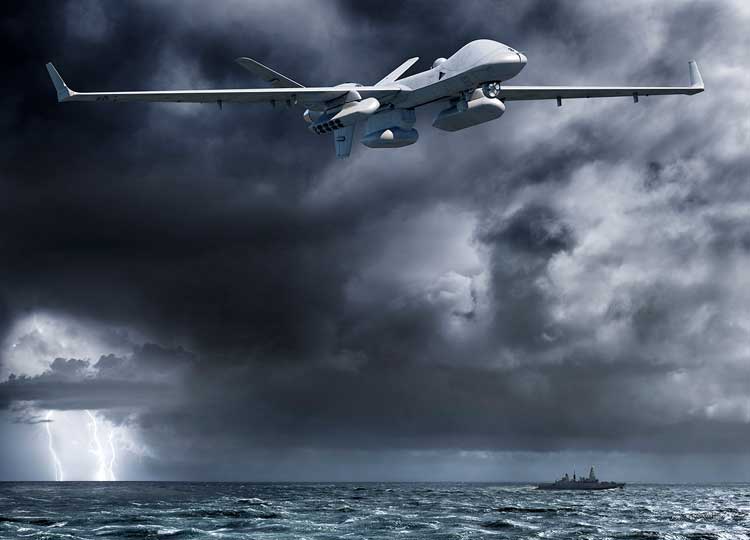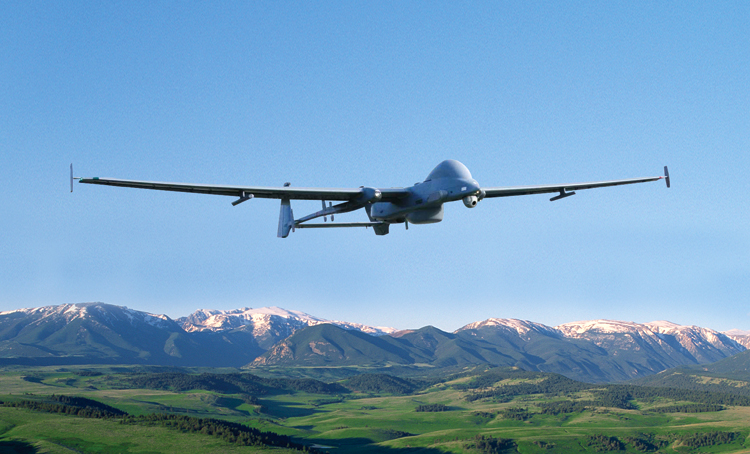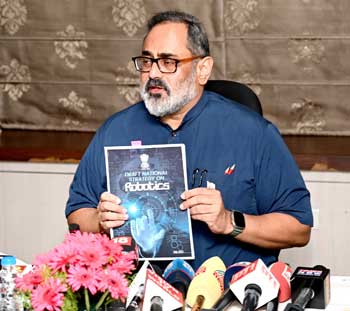INDIAN ARMED FORCES CHIEFS ON
OUR RELENTLESS AND FOCUSED PUBLISHING EFFORTS

SP Guide Publications puts forth a well compiled articulation of issues, pursuits and accomplishments of the Indian Army, over the years

I am confident that SP Guide Publications would continue to inform, inspire and influence.

My compliments to SP Guide Publications for informative and credible reportage on contemporary aerospace issues over the past six decades.
Drones, Anti-Drone and Robotics
Chief of Defence Staff (CDS) has ordered comprehensive study on UAVs and Armoured Helicopters for All Three Services. The studies, undertaken by tri-service teams, are meant to optimise the number of platforms required as well as the resources and avoid duplication.
 |
The Author is Former Director General of Information Systems and A Special Forces Veteran, Indian Army |

News reports of October 17, 2023 have stated that the Chief of Defence Staff (CDS) General Anil Chauhan had recently ordered two studies to be conducted on major military platforms used by all three services. According to defence sources, these platforms are Unmanned Aerial Vehicles (UAV) and armoured helicopters. Media further said that the study on UAVs has since been completed with a recommendation to acquire 31 x MQ-9B High Altitude Long Endurance (HALE) UAVs and 155 x Medium Altitude Long Endurance (MALE) UAVs.
The broad outcome of the study on UAVs was a requirement for 31 MQ-9B HALE UAVs and 155 MALE UAVs
Media reports quoted unnamed sources to say, "The studies, undertaken by tri-service teams, are meant to optimise the number of platforms required as well as the resources and avoid duplication. The first study (on UAVs) was conducted in August-September and the report has been finalised. For the second study, the Terms of Reference are currently being finalised and the study is expected to begin in a month of two. The broad outcome of the study on UAVs was a requirement for 31 MQ-9B HALE UAVs and 155 MALE UAVs. While the deal for MQ-9Bs is in progress, the division of the 155 MALE UAVs between the three services is yet to be decided."

However, while the study on the requirement of UAVs for the Armed Forces, as ordered by the CDS, was conducted in August-September, the Defence Acquisition Council (DAC), headed by Defence Minister Rajnath Singh had already cleared the procurement of 31 x MQ-9B UAVs from General Atomics, 15 Sea Guardians for the Indian Navy and 16 Sky Guardians – eight each for the Indian Army and Indian Air Force in June 2023, at an estimated cost of $3,072 million though the US Foreign Military Sales (FMS) route. This implies that the requirement of 31 x MQ-9B Predator, 15 Sea Guardian and 16 Sky Guardian UAVs has simply been accommodated in the study undertaken later.
India is making strides in key technological areas from artificial intelligence (AI) to semiconductors to robotics
Just ahead of talks between Prime Minister Narendra Modi and US President Joe Biden on the sidelines of the G20 summit in September 2023, the Ministry of Defence (MoD) issued the Letter of Request (LoR) to the US Government. Based on the LOR, the US Government and the MoD is to finalise the Letter of Offer and Acceptance (LOA) where details of equipment and terms of the procurement would be negotiated and finalised.
Now there is speculation that after completion of the study on UAVs required by the Armed Forces, the DAC would expedite the clearance to weaponise and incorporate satellite communications upgrade for the Israeli-origin Heron UAVs held by the military. The three services operate a large number of Heron MALE UAVs. A major upgrade to weaponise and incorporate satellite communication on these UAVs is estimated to cost 21,000 crore, which has been pending for the past several years.
Concurrently, Chennai-based start-up 'Hawking Defence Services' (HDS) has developed a compact "wearable anti-drone system" that can detect and neutralise multiple drones at long ranges, often before the drone fully takes off. Weighing just 775 grams, it comprises wearable RF sensors for drone detection, jammers that utilise smart jamming to defeat enemy drones, and an active, quad-band external omni-directional antenna; making a complete detect-and-defeat solution to mitigate drone threats.

HDS also offers hand-launched micro UAVs and a 'Drone Flare System'. Other wearable anti-drone systems in the market include the 'Wingman' series and 'Skylock's wearable system, which is worn like a vest and can neutralize any drone within one km of the device.
India is making strides in key technological areas from artificial intelligence (AI) to semiconductors to robotics. Advances in AI are expected to have a significant impact in the realm of Cyber-Physical Systems (CPS) such as Robotics which relies on AI to enable the interaction of the virtual world with components of physical systems. To further maximise the benefits of an AI-integrated society, the Union Minister of State (MoS) for Skill Development & Entrepreneurship and Electronics & IT, Rajeev Chandrasekhar released the Draft draft National Strategy on Robotics for public consultation on October 13, 2023 on the MyGov platform.
The National Strategy on Robotics has been envisaged as one such key component of IndiaAI

The National Strategy on Robotics has been envisaged as one such key component of IndiaAI. The strategy will present significant opportunities for the manufacturing sector, Industry 4.0 and cyber-physical systems among others. It aims to capitalize this potential and nurture the development of robotic technology, helping India emerge as a "Robotics Hub" for the world. To drive India's global leadership in Robotics, four sectors of strategic importance have also been identified, namely – manufacturing, agriculture, healthcare and national security.
The strategy is proposed to be undertaken as the 'National Robotics Mission', which will be executed through the establishment of the Robotics Innovation Unit (RIU) as an institutional framework under IndiaAI. The RIU has been proposed as a fast responsive independent agency to nurture the dynamic robotics startup, research, and innovation ecosystem in India.Multiple interventions have been recommended across the key pillars of a robotics innovation cycle which include research and development (R&D), demonstration and testing, commercialisation and supply chain development, and adoption and awareness, to ensure creation of indigenous capabilities in robotic technology in India.
Finally, the requirements of the Indian Armed Forces for drones and anti-drone systems itself is colossal. Over the past two years, the Armed Forces have placed orders for swarm and loitering munitions alone exceeding 1000 crore from the indigenous private industry, which the military says is just the beginning. With increasing employment of variety of drones in the combat zone, it is high time the Indian Army introduces an All Arms Pilot Operators Course.





